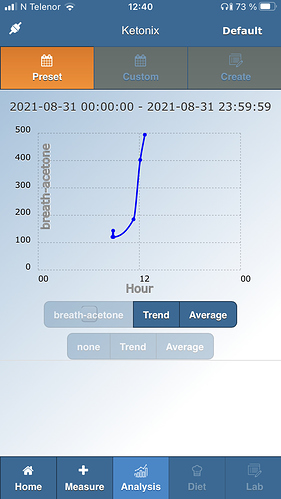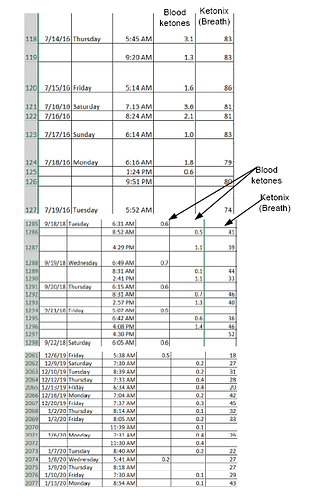Hi Ketonix users,
I am suspecting that my Ketonix is measuring too high results. I am positive that my measuring technique (breathing technique) is correct (normal calm breath prior, exhale to 20% left, slow smooth steady 30 sec exhale of the remaining air to as empty as possible). It is my belief that the results I am getting should only be possible after a really long fast. I have done the ketogenic diet for five days with some intermittent fasting, but the measuring results are, what they seem to me, through the roof.
See attached photo. The spike from 200 to 500 is after a keto cacao with a lot of MCT. I would have at least expected my level of ketosis to be within
the gauge (0-100 ppm), not 140-500.Is there anything that can explain the results? I do not use alcohol.
Kind regards
Bendik



 )
)